Sustainability Teaching Resources
Make teaching sustainability easy this school year with printable worksheets, activities for kids, lesson plans and more — all created by teachers for your primary classroom.
This teaching resource collection is aligned with the Australian Curriculum cross-curriculum priority to help your students build a more sustainable future!
Each resource was designed to help your students understand how they can implement sustainable practices in the classroom and at home.
Our teacher team has carefully reviewed and curated each resource to ensure your students will be armed with information on everything from composting to conservation, as well as how to reduce, reuse, recycle, rethink, and repair.
Tackling this topic for the first time in your classroom? Read on for a primer from our teacher team!
What Is Sustainability? A Kid-Friendly Definition
Sustainability is a cross-curriculum priority in the Australian Curriculum and for a good reason. Primary school is an important time to begin talking to students about sustainability as we can instill these practices early and make them into lifelong habits. But explaining this concept to kids can be tricky.
Here's a kid-friendly sustainability definition we like to use to explain its meaning to our students:
Sustainability is the ability to meet someone's current needs without hurting the ability of people in the future to meet their own needs.
On a more technical level, sustainability represents a holistic approach to addressing environmental, social and economic challenges in a way that supports long-term well-being and resilience.
This often includes practices such as reducing carbon emissions, conserving natural resources, and promoting social equity.
- Plus Plan
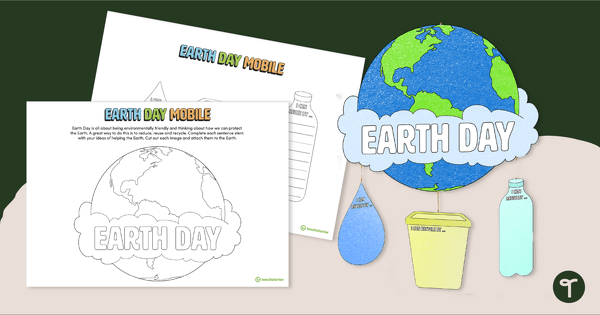
Earth Day Mobile - Craft Template
Inspire your students to reduce, reuse, and recycle with a fun Earth Day craft project.
- Plus Plan
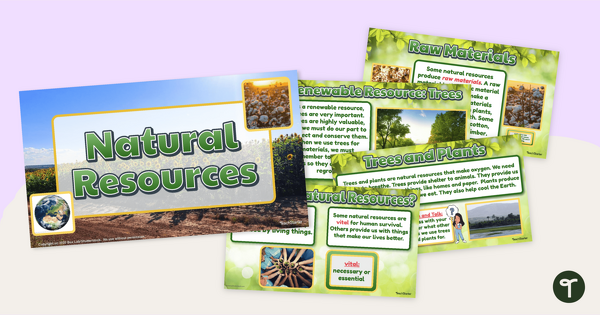
What Are Natural Resources? PowerPoint
A teaching presentation that explores what natural resources are and where they come from.
- Plus Plan

Natural Resource Use in the 21st Century PowerPoint
Explore how natural resources are used by humans in the 21st century with an instructional slide deck.
- Plus Plan
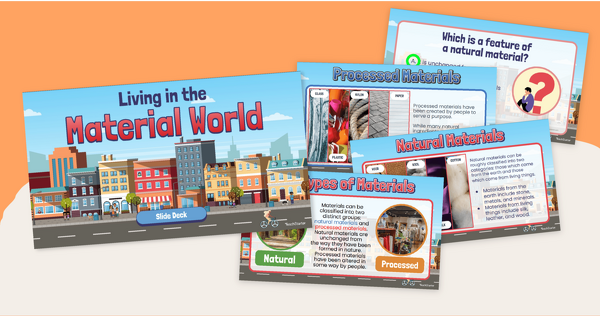
Material World PowerPoint - Processed and Natural Materials
Discover the difference between processed and natural materials with an instructional slide show.
- Plus Plan
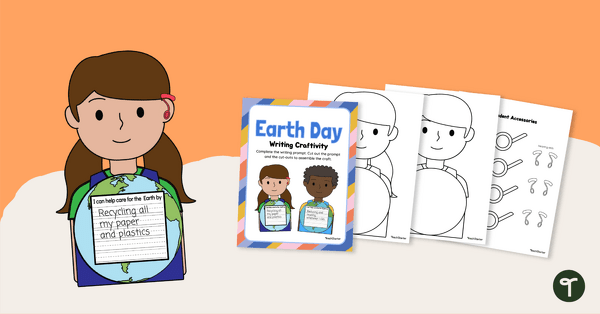
Earth Day Writing Craftivity
Create a fabulous Earth Day display with a printable Earth Day craft activity.
- Plus Plan
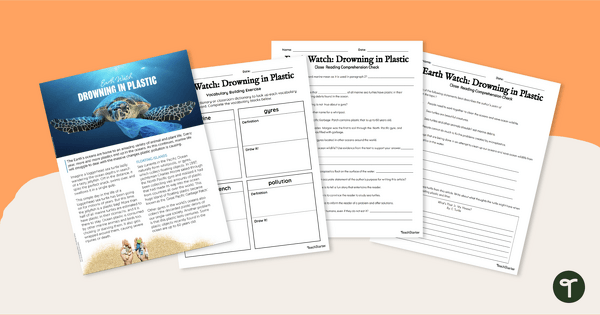
Earth Watch – Drowning in Plastic Reading Comprehension Worksheet
A comprehension worksheet for a magazine article about plastic pollution in our oceans.
- Plus Plan
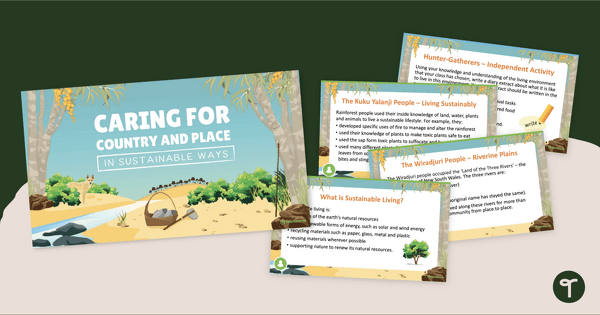
Caring For Country and Place in Sustainable Ways PowerPoint
Explore how Indigenous peoples care for Country and Place in sustainable ways with a teaching presentation.
- Plus Plan

Water is Life - Instructional PowerPoint
Learn about the importance of water to life on Earth, along with where water comes from, with an instructional slide deck.
- Plus Plan
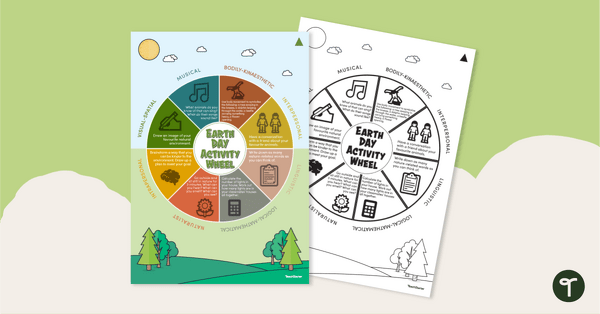
Earth Day Activity Wheel
Encourage students to get involved in environmental responsibility with this collection of 8 Earth Day activities that focus on Gardner’s Multiple Intelligences.
- Free Plan
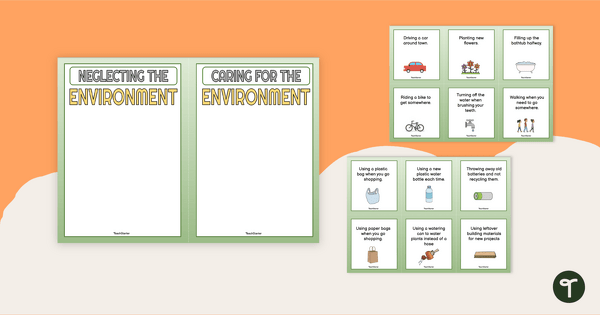
Sustainability Activity - Caring for the Environment
Promote sustainable living with a sustainability sorting activity.
- Plus Plan
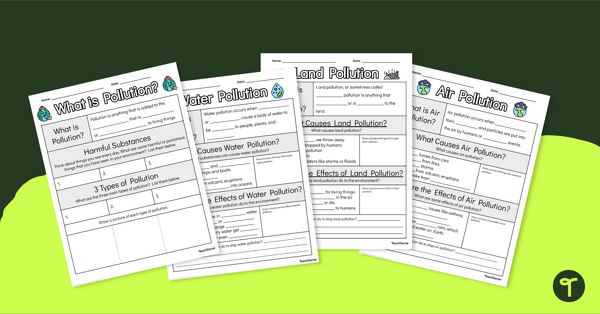
What is Pollution? Guided Note-Taking Worksheets
Provide your learners with an organised note-taking method with a pack of Pollution note-taking templates.
- Free Plan
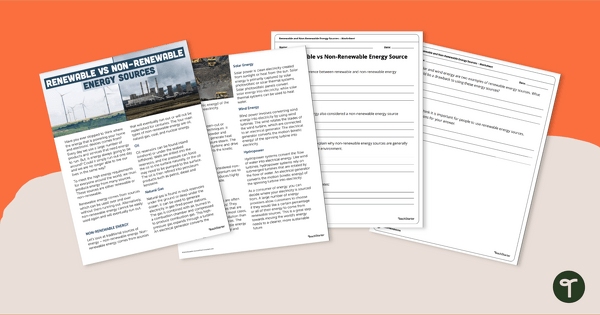
Renewable vs Non-Renewable Energy Sources – Worksheet
Discover the difference between renewable and non-renewable energy sources with a comprehension passage and worksheet.
- Plus Plan
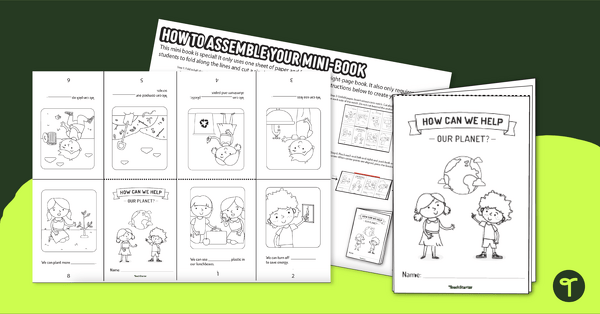
How Can We Help Our Planet Mini Book
Help your students learn about how to keep our planet clean with a printable Earth Day book.
- Plus Plan
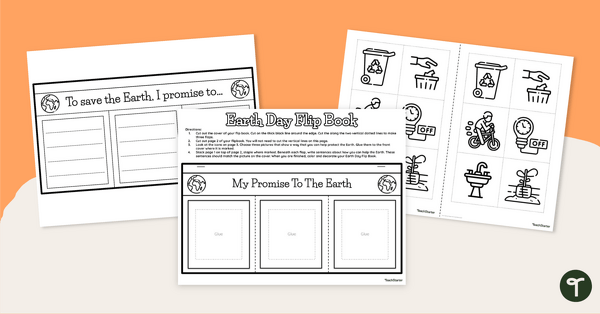
I Promise To... Earth Day Flip Book Craft
Make a promise to protect the planet with a printable Earth Day flip book.
- Free Plan
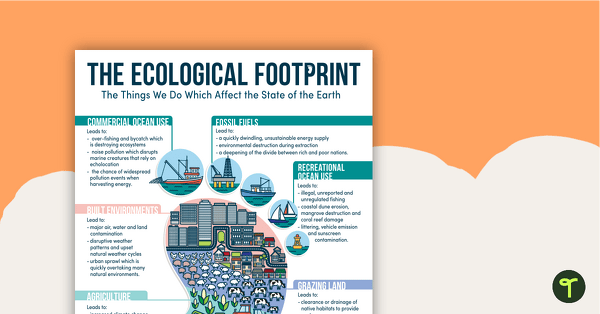
My Ecological Footprint - Reference Sheet
Teach your students about the things we do that affect the Earth with an ecological footprint reference sheet.
- Plus Plan
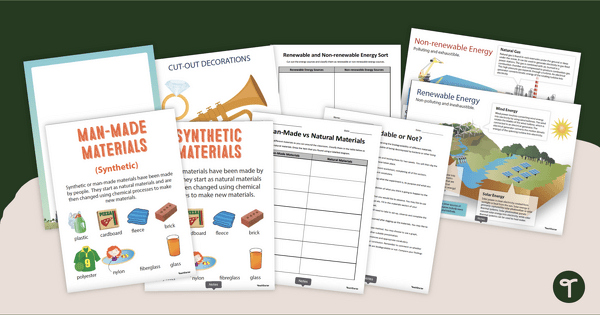
Material World Resource Pack
Learn about natural and manmade materials with a printable resource pack.
- Plus Plan
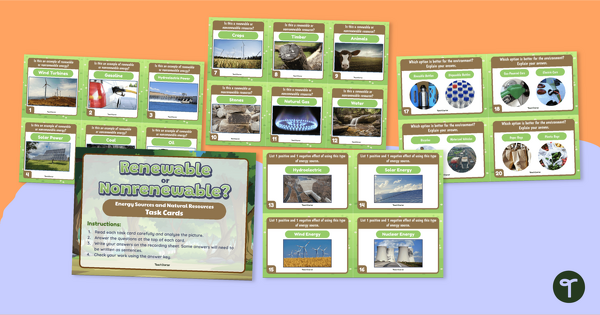
Renewable or Nonrenewable? Earth's Resources Task Cards
Identify natural resources and the types of renewable energy with 24 renewable and nonrenewable resource task cards.
- Plus Plan
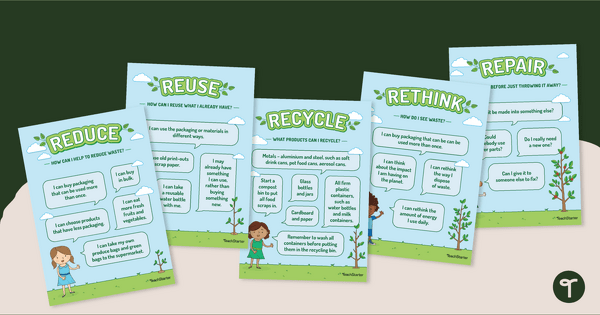
Reduce, Reuse, Recycle, Rethink and Repair Posters
Explain the concepts behind reducing, reusing, recycling, rethinking and repairing waste with a set of printable sustainability posters.
- Plus Plan
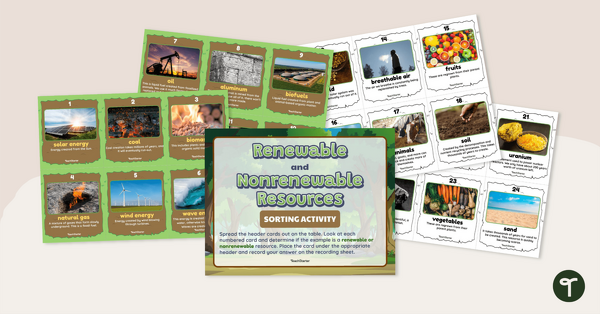
Renewable and Nonrenewable Resources – Sorting Activity
Identify resources as either renewable or nonrenewable with this 24-card sorting activity
- Plus Plan
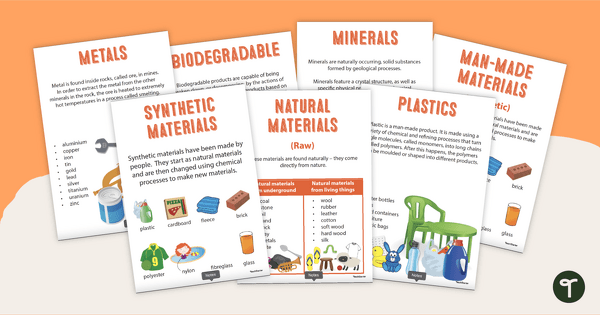
Types of Materials - Printable Anchor Charts
Introduce your students to the different types of materials with a pack of printable anchor charts.
- Plus Plan
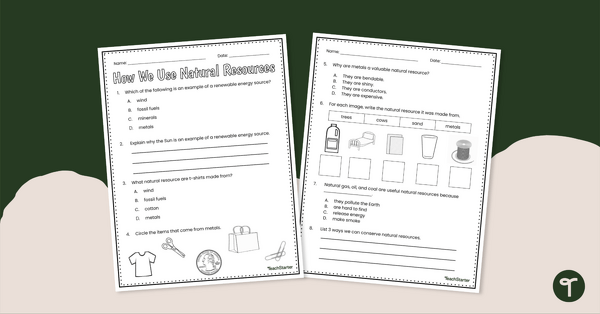
How We Use Natural Resources Worksheet
Explore the characteristics of natural resources and what makes them useful in products and materials with this worksheet.
- Plus Plan
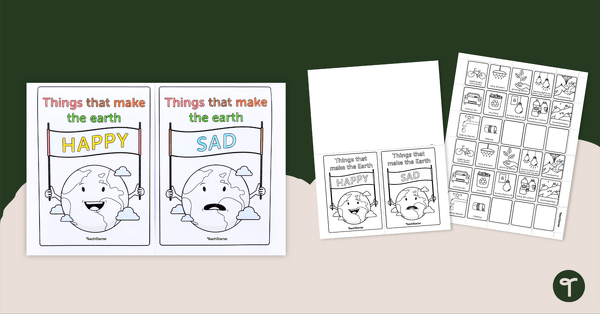
Environmental Awareness Flip Book - Earth Day Activity
Use this flip book to build awareness of actions that are good and bad for the environment.
- Free Plan
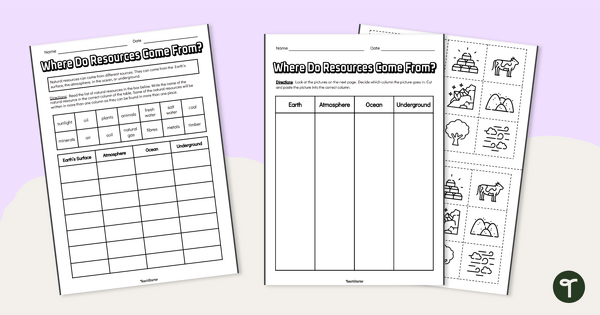
Where Do Natural Resources Come From? Worksheet
Discover where Earth's natural resources are located with a pair of differentiated Natural Resource Worksheets.
- Plus Plan
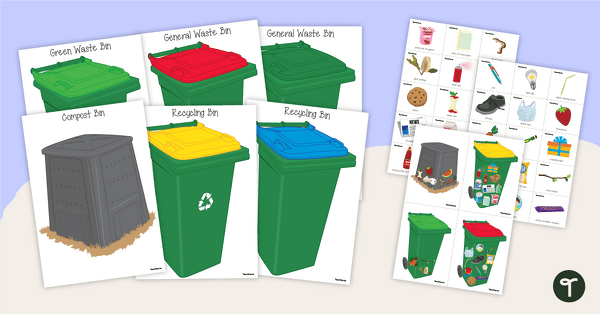
Rubbish Bin Sorting Activity
Learn about recycling, composting, and sustainable practices for waste management with a fun sorting activity.
- Free Plan
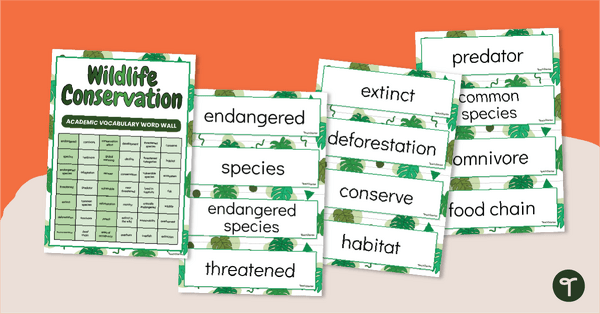
Wildlife Conservation Vocabulary Words
Build academic vocabulary with a printable Animal Conservation word wall.
- Plus Plan
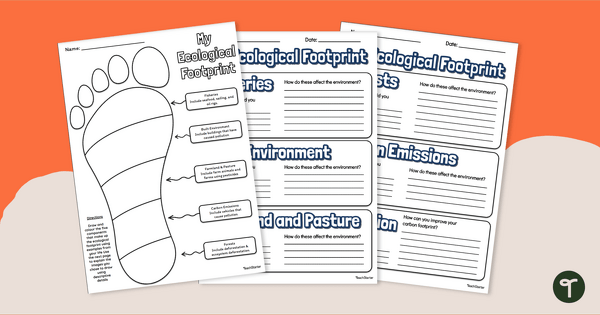
Ecological Footprint Draw and Write
Help your students be more eco-conscious by having them complete a carbon footprint worksheet.
- Plus Plan
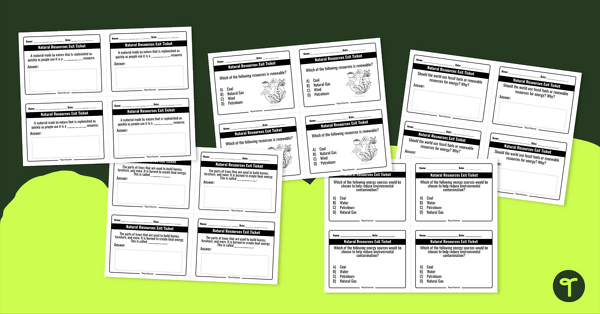
Natural Resources – Exit Tickets
Assess student understanding of natural resources with this set of exit tickets.
- Plus Plan
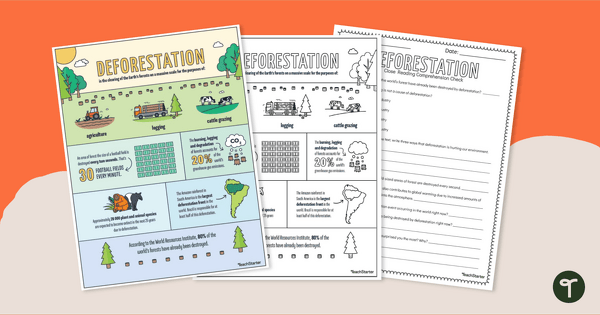
Deforestation Infographic Comprehension Activity
Read and learn about deforestation with an engaging infographic and comprehension worksheet.
- Plus Plan
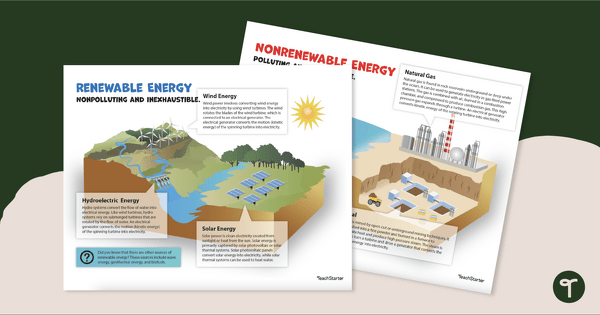
Renewable and Non-renewable Energy Sources Poster Pack
Display and examine renewable and non-renewable energy sources, including wind, hydro, solar, natural gas, oil and coal.
- Plus Plan
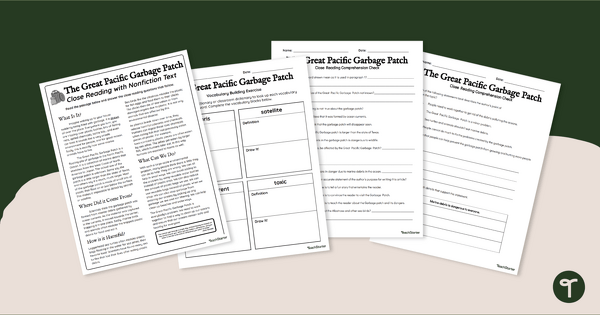
Comprehension Worksheets - The Great Pacific Garbage Patch
Read to learn about the Great Pacific Garbage patch with a printable reading comprehension worksheet pack.
- Plus Plan
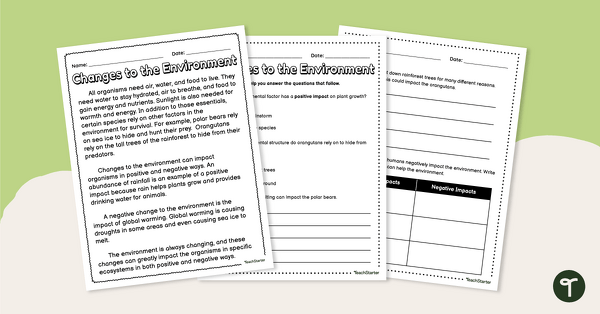
Changes to the Environment – Worksheet
Learn about environmental changes and how they affect living things with this worksheet.
- Plus Plan
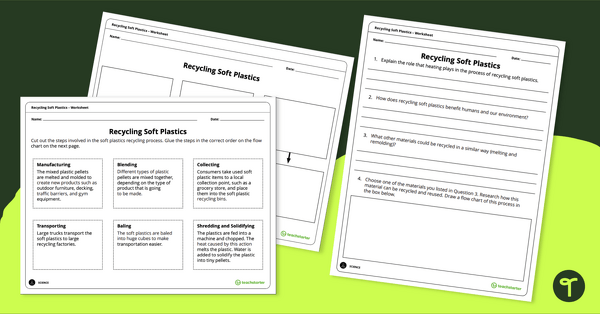
How is Plastic Recycled? – Recycling Worksheets
Explore the process of recycling plastic with a printable recycling worksheet.